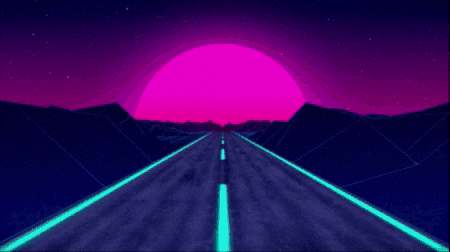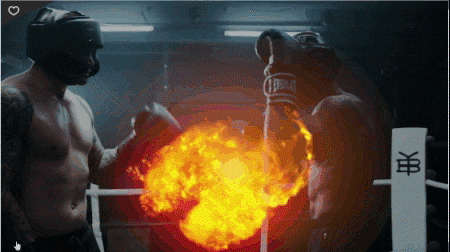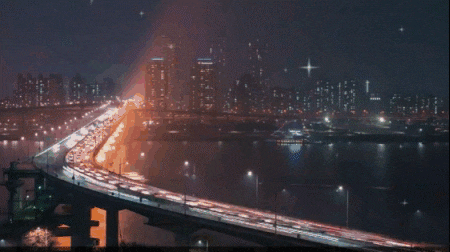- Home
- DIY Special Effects
- Light Effect for Action Filmora Tutorial
Transcript
Begin by importing your video; you can either import your clip or get a video directly from the “Stock Media” menu. Head over right here, “Pexels,” “Video,” and look for the term “Witch.” We have tons of options to choose from, but I am just going to scroll down until I get the “Sphere” and drag that right onto your timeline.
Bring your playhead forward, then duplicate this video by holding down “Command + D” on your keyboard. Drag this right above the original and make sure they match in duration. So, first, we are going to begin by darkening our video.
Double-click your duplicate, head over to “Color,” and using the stuff we already have here, I can just increase the “Contrast,” lower the “Brightness,” and then decrease the “Saturation.” I can also grab a “3D LUT” right here, “Cool Film," and get this nice fantasy look.
Let's work with the options here and ensure it looks perfect. Now, one trick that you can do if you are happy with the darkness but just want the overall thing to be a little bit less intense. You can go to “Video,” “Compositing,” and just simply lower the “Opacity.”
So, this is not gonna target a specific area as all these sliders do in the menu here. But instead, work with the overall clip and reduce the visibility all at the same time. So, I'm going to go with like 87 percent, and now I have a good fantasy look to put my magical globe.
Bring your playhead at the start, and now I'm going to track the motion of this sphere because, over time, the subject does move it around. And I want to make sure that the element that I’m going to use sticks to the sphere. So, enable “Motion Tracking” on your duplicate. Double-click on this box, bring it right to the center, and then increase the box size. Once I am done, I am going to start tracking. Hit “OK,” we are going to come back to this later.
Go to “My Media,” “Sample Media," and "Color,” and we are basically going to get the glow from these “Sample Color.” This depends on you if you want it to be warm, purply, blue, white, choose any color that you like. So, I’m going to go with this “Gradient,” you can see it already has a glowing center, so that’s perfect for this sphere. Drag it right above, match the duration, “Motion Tracking," and choose your gradient right here.
I just need to scale it up so that it covers the entire thing. Simply double-click on it and grab the corners right here so that it fills and completely covers the sphere. So, we've basically censored the ball, and now I'm just going to change the "Blending Mode" of this. So, you can experiment with each of these, but we definitely want it to glow. I'm going to go with this one. It's looking pretty good, and if it's too extreme, we can just lower the "Opacity" right here.
So, once I have this, I just need to make sure that it's around my ball and not on the subject's hand and in the background. So just switch to the "Mask" section, grab a "Circle" mask, and match the size of your sphere. I'm going to go a little bit larger; that way, I can get a glow on the outskirts as well. Something like this.
Then increase the “Blur Strength,” so now we have the glow on the subject, and if you want it to be more, you can simply scroll down and increase the “Scale.”
To avoid this harsh line, I'm just going to double-click on the actual gradient, not on the “Mask,” and just increase the size so that it doesn’t reveal the edges of the gradient. So, now you shouldn’t be getting those harsh lines.
Now, because the camera angle changes over time. We are going to have to make keyframes for the “Scale” and “Position” of this “Mask.” So, first, we are going to make one right here. Click on this "+Add" move forward, and at any needed point, you want to just move this “Mask” around. So, just double-click and move it to where it is.
So, now you can go ahead and bring some color grading into the picture. This is going to bind everything together and give you that fantasy look. There are tons of options in the "Effects" menu. If you go to the "Filter & LUT" section under "Filmstock," there are tons of options to choose from. So, let’s try one of these.
You can always double-click to see a preview before actually putting the effect on. I'm going to add this "WarZone" effect right above. You can also double-click and lower the "Opacity" if it's too much.
Then I go to my gradient here, lower the "Opacity," and just keep stacking these effects on top until you have a nice color gradient. To finish this off, I am going to add a smoke effect to go around the video. Head over to the "Elements" menu this time and type in smoke inside the search bar. I'm going to go with one of these smoke effects that covers the entire screen.
Now, one thing that you can do is to change the "Blending Mode" of this element and have it blend in better with the video. So, you can see once we go down, we have some options that can make this look better. So, this is with the "Screen" blending mode, and this is what it looked like before. So, just by changing it to "Screen," I can make it look more realistic.
Move the smoke effect underneath your gradients, and we can kind of make it look like it's showing up from behind the globe. Now, on top of our globe, we are going to add another smoke effect. There we are, looking pretty good. For this one, there is no need to change the "Blending Mode"; we can simply work with the "Opacity" slider. Once you have your smokes in place, we are finished with the effect.
How To Create Light Effect for Action in Filmora
What you need to prepare:
- A computer (Windows or macOS)
- Your video materials.
- Filmora video editor
Import Video or Add From Stock Media
To access Filmora on your device, hit the “New Project” button from the main interface. Now, you need to import your video into the media panel of Filmora. You can import your recorded video or get it from the “Stock Media” menu by selecting "Pexels" from the left-side panel. Once you find that video, select it and drag it directly on the timeline panel.

Once you are done, you can track the timeframe of the video from the timeline. To duplicate your video, take your playhead a few minutes ahead and press “Command + D” using your keyboard. Now, select your duplicate video, and bring it to the second track, right above your original video, and match the duration of both videos.

Adjust Tone and Darken Video
However, to apply the darkening effect, double-click the duplicate video and select the “Color” tab from the settings window. Then, under the “Tone” section, adjust the “Brightness,” “Contrast,” and “Saturation” until you get the desired darkness level for your video. You can also choose the "3D LUT" effect from the drop-down list to get the hyperrealistic magic effect.

Moreover, to make the darkness effect look slightly less intense, head over to the "Video" tab. Access the "Compositing" section to adjust its "Opacity" from under the "Basic" tab. This will change the overall look of the video without targeting any specific area. You can observe the effect by clicking the “Eye” icon of this video layer.

Duplicate Video and Enable Motion Tracking
If you have a moving object in the video clip and want to apply some effects specifically on that object, you need to track the motion of that object. For this, select your duplicate video and toggle “Motion Tracking” from “Basic” under the “Video” tab to enable it.

Afterward, a box will appear in the preview panel on your clip. Adjust the size and position of this box according to your object by dragging it from the corners. Start the “Motion Tracking” and wait for a few seconds. After that, hit the "OK" button to save these settings.

Add Glowing Effect on the Object
To add the magical glowing effect to your object, navigate toward the "My Media" tab. Under this tab, look for the "Sample Media" and select the “Sample Color." Now, choose any color from the available color options in the media panel. After choosing the color, drag it to the timeline panel and match the time duration of this track with the other tracks.

Adjust the Color and Position Using Preview Window
Ensure to enable the "Motion Tracking" under the "Basic" section of the "Video" tab. After enabling it, you can choose the required color from the drop-down list. Now, double-click to select the color and adjust its position manually from the preview panel. Head over the color gradient, double-click on it, and drag its sides to make it stick to the object.

Change the Blending Mode and Set Custom Opacity
To change the appearance of the effect, double-click on it on the timeline. Go to the “Video” tab of settings and enter the “Basic” section. Look for the “Blending Mode” option and choose any from the drop-down list. After selecting the "Blending Mode" of your choice, you can change its "Opacity" per requirements.

Apply the Required Mask on the Object and Resize
Afterward, access the “Mask” tab and choose the mask according to the shape of your object. You can adjust the size of the mask manually from the preview panel. It is recommended to keep it a bit larger than the object to give a realistic look to your effect.

Find the "Blur Strength" slider by scrolling down the "Mask" section to make it look natural. By increasing it, you'll see the effect is naturally applied to the surrounding areas of the object. You can increase or decrease the area of this effect by changing the "Scale" and hitting "OK" to save these settings.
Select the effect from the preview panel if you notice that your gradient is not completely blended with the surroundings. Increase its size by dragging the edges of the effect box, and your issue will be resolved.

Add Keyframes to Move the Object
Now, to make the effect stick along the object's motion, you are required to add keyframes at different positions. Place the playhead at the start of the effect on the timeline and hit the “+Add” button under the “Mask” section to add the keyframe at this point. Now, move the playhead forward and place it where you want to add the next keyframe. Select “OK” to save these settings.

Color Grade the Object by Applying Effects
Moreover, head toward the "Effects" menu to apply an overall color gradient to the object. This will blend all the effects applied to the object and give a realistic touch. Once you have entered the tab, you will see the "Filmstock" section on the left toolbar. Click it and choose “Filters & LUT,” drag and drop the required effect on the timeline panel. You can also double-click it to set its “Opacity.”

Add Elements to the Video
Furthermore, to enhance the magical appearance of the clip, move towards the main toolbar and click on “Elements.” You can search for any element in the search bar as per requirements. Select the effect and drag it on the track in the timeline panel, making its appearance look more natural.

Afterward, select the "Element" on the track and enter the "Basic" section under the "Video" tab. Then, select the "Blending Mode" of your choice from the drop-down list. Observe the before and after results of the effect in the preview panel and click "OK" after choosing the final light effect.

Adjust the Position of the Effects
However, if you want to bring any effect on the back of the object, simply drag the effect from the media panel and place it below the gradient track. This will blend its appearance with the other effects and look more realistic. Add the same effect on top of the object by dragging it to the timeline and placing it on the new track. Double-click any effect and adjust its "Opacity" under the “Basic” tab.

In this article, we have learned how to apply magical light effects to the video, specifically on the moving object. We have also explained a step-by-step process to make those effects blend with your videos perfectly with Filmora effects. So, follow all these steps using Wondershare Filmora and make your videos stand out with customized elements.




